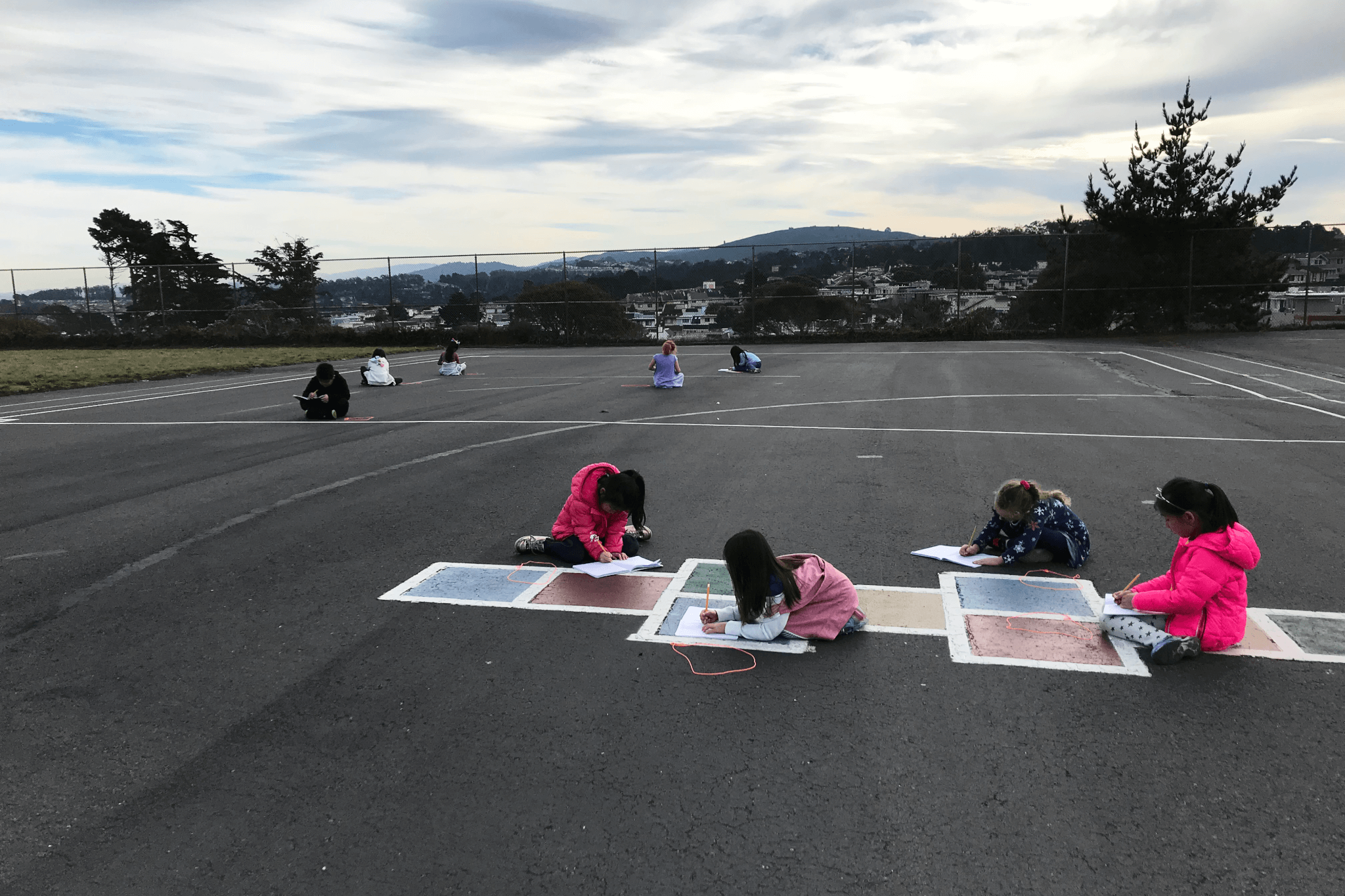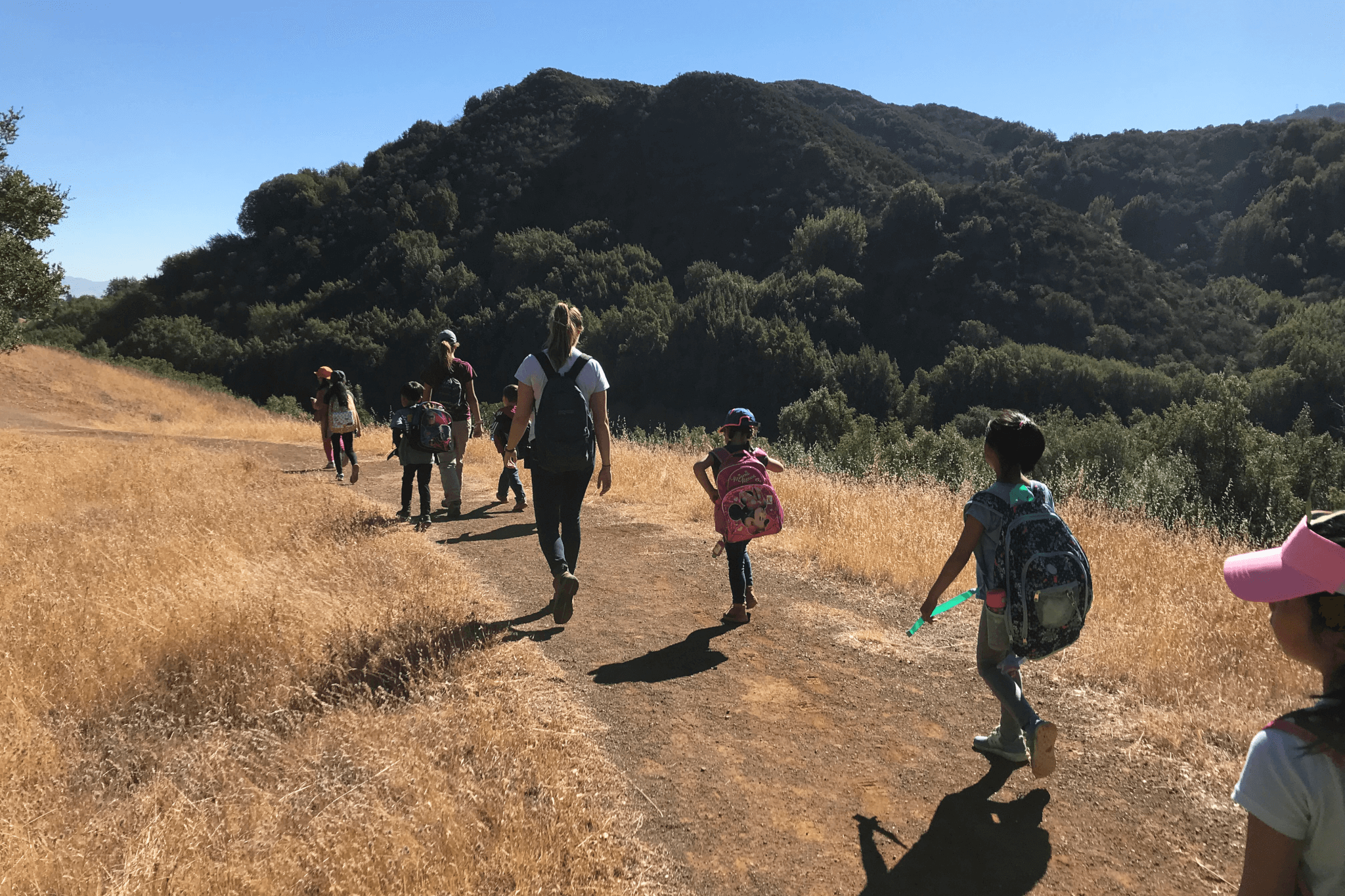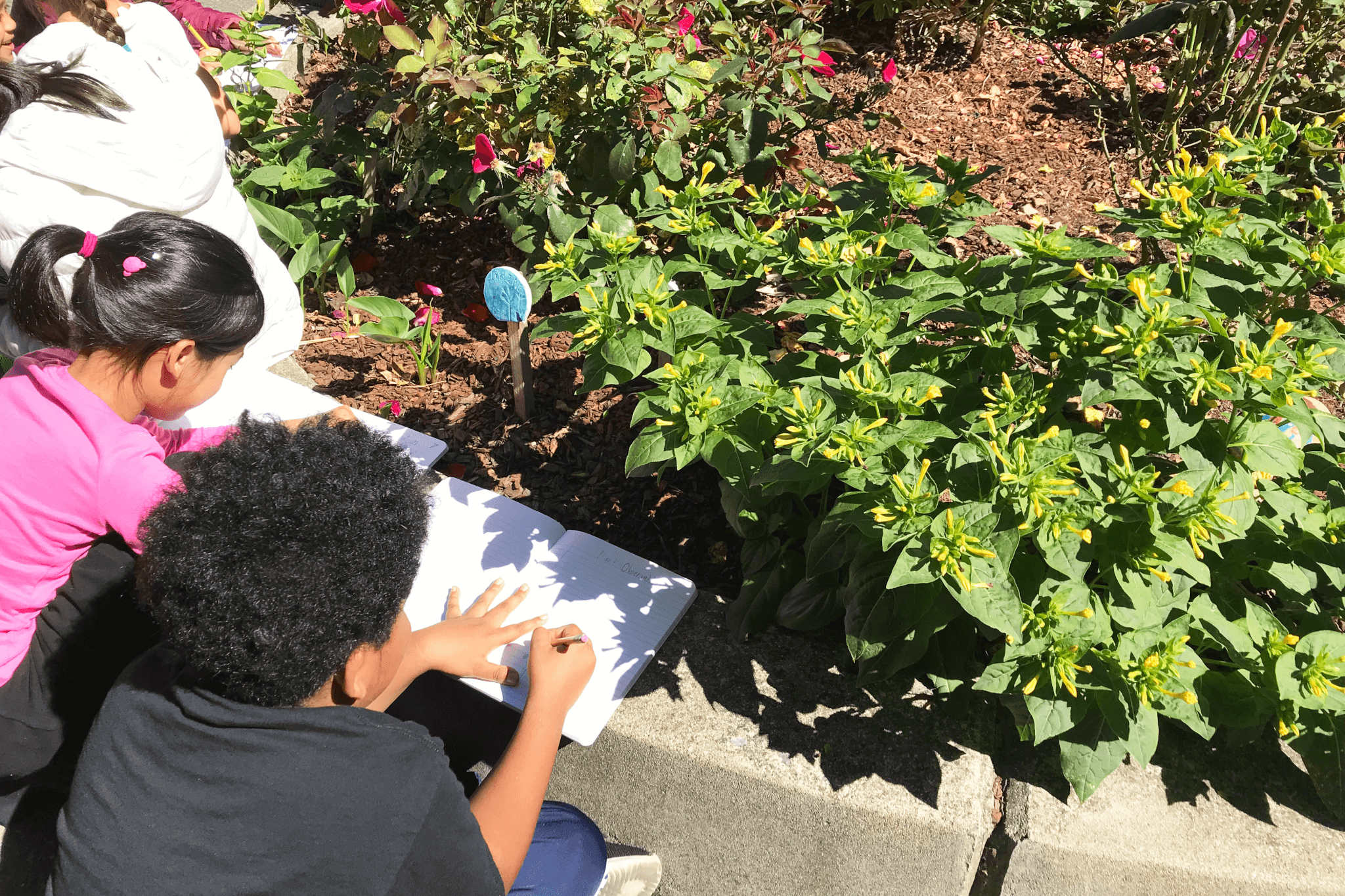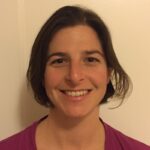It is not easy to find a healthy habitat on our school campus. Our campus is a bit of a concrete jungle. Concrete sidewalks connect the buildings that lead to an expansive concrete play area which is surrounded with, you guessed it, more concrete. Beyond the concrete are a few green spaces. There is a large field that consists mostly of poorly-maintained grass and gopher holes, and then a small strip of hillside with ice plants and a few trees. Empty wrappers, juice boxes, and cans are often found in these areas as well. Our San Mateo Environmental Learning Collaborative (SMELC) unit of study was based on these observations. Why do certain habitats at our school look different than others? Why are there plants growing in certain areas, but not in others? What have humans done to our school grounds, and what impact has that had on the local habitat?
We began our unit with a great deal of observation work. We created a map of the school and developed a key for different types of habitats we found. Our students identified four main habitats: concrete, field, tree, and garden. We went outside and students used looped string to make closer observations within each type of habitat. With our science notebooks, we got down on the ground, recorded, sketched, and counted the various things we found in each habitat. This led us to graphing and writing work as we compared our findings in each habitat. We were thrilled to be making so many cross-curricular connections.
Shortly after we began observing our habitats at school, we were fortunate to take a field trip to Hidden Villa. The staff from Hidden Villa had come to our school to do some pre-visit work with our students. They focused on the habitats we would be seeing at Hidden Villa, and taught our students about why different animal and plant species are more suitable for different types of habitats. Our students were introduced to decomposers and the valuable role they play in an ecosystem. They still quote their Hidden Villa instructor when we discuss decomposers: “munch munch munch, wiggle wiggle wiggle, poop poop poop!” They got the point, to say the least!
At Hidden Villa, our students were able to observe and interact with multiple healthy habitats. They walked through a vibrant forest that was home to banana slugs, diverse plant species, and deer. They sampled plants and fruits in a bountiful garden, and fed animals on a farm that featured a variety of livestock. Thanks to the skilled educators at Hidden Villa, our students’ day focused on the habitats they were visiting, and the roles each component of the habitat played in maintaining a healthy ecosystem. Our students had a wonderful time, and it was a treat to spend the day in nature learning from the educators at Hidden Villa.
Upon returning to school, our students were able to think more critically about what they were observing in our school environment, and what components of a healthy habitat might be absent. We were able to dive more deeply into topics such as the components of a functioning ecosystem, biodiversity, and human impact.
One goal of our professional development with SMELC was for our students to see themselves as solutionaries, and we have truly seen this transformation! Our students have been able to identify problems at our school, such as trash on our campus and a lack of biodiversity, and how these can impact the function of an ecosystem. They have taken it upon themselves to start proposing solutions to these problems. The other day, a student found my partner teacher after school to share with her a poster that he had created encouraging other students to pick up any trash that they find. My students are eager to write to our principal asking her to fund more garden beds so that our school might have more biodiversity throughout the campus. The students have also proposed more trash cans near the yard so that garbage can be easily disposed of, and are now encouraging waste free lunches so there is less garbage generated. One student had the idea of starting a “care for the earth day” for all students at the school to get involved in cleaning up the campus and planting new plants. Not only are our students considering how they can help, but they are also thinking about how to encourage their peers to get involved as well!
We are so thrilled with what our students have learned, and the agency that they feel at the culmination of this unit. Thanks to SMELC and support from Ten Strands, we were able to create a comprehensive unit that introduced our students to issues on our campus, and what is possible when an environment is well cared for. We are eager to work with our students to start implementing some of their solutions, and are excited to see where their futures as solutionaries will inspire them next.






2 Responses
Rebecca – What a wonderful journey you have taken the children through and wonderful documentation of it. Human development is probably the biggest threat to habitat and biodiversity loss and you were able to lead the kids through this realization in, pardon the pun, such a concrete way. Thank you for the important work you do!
Woops, I meant our built environment when referring to ‘human development’